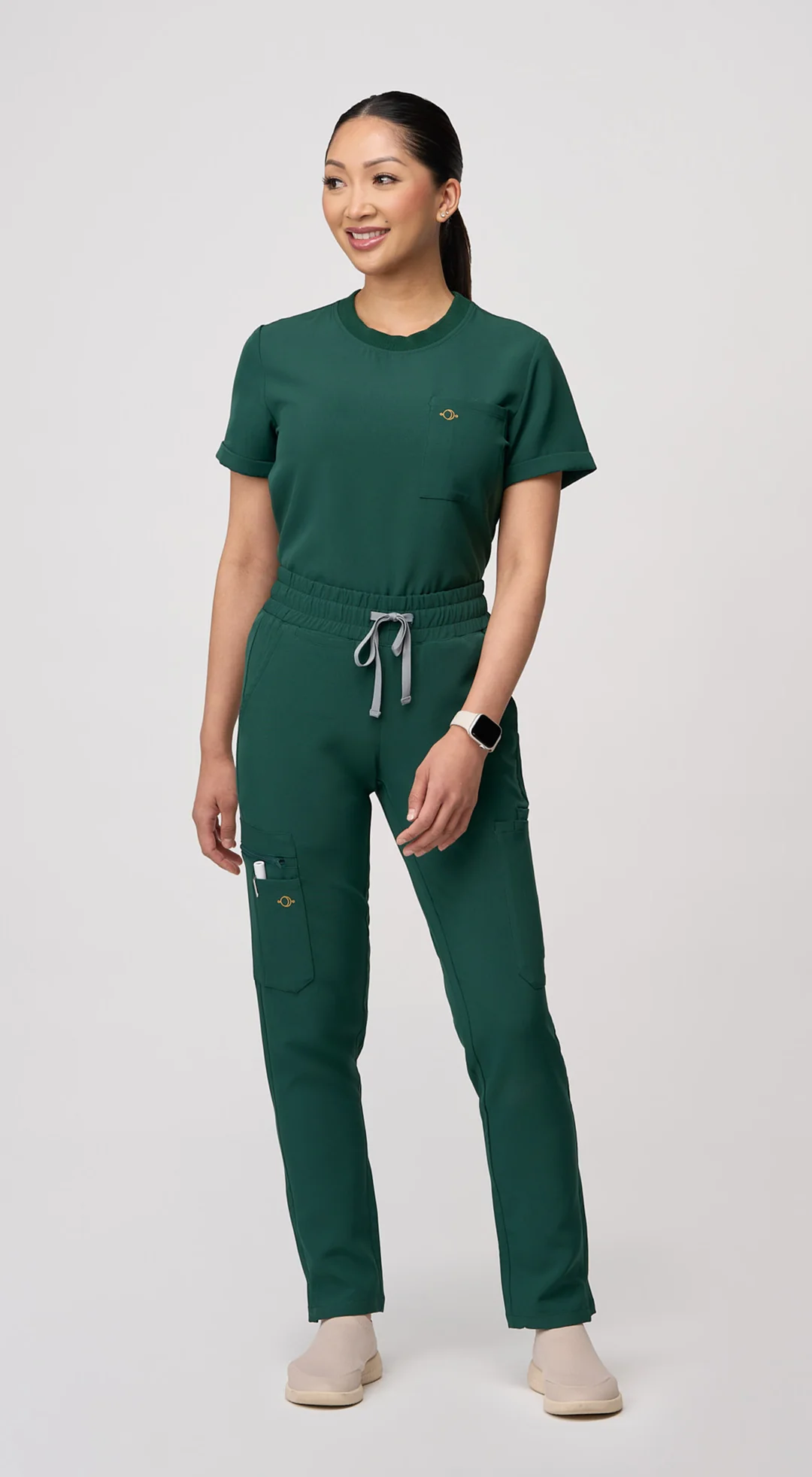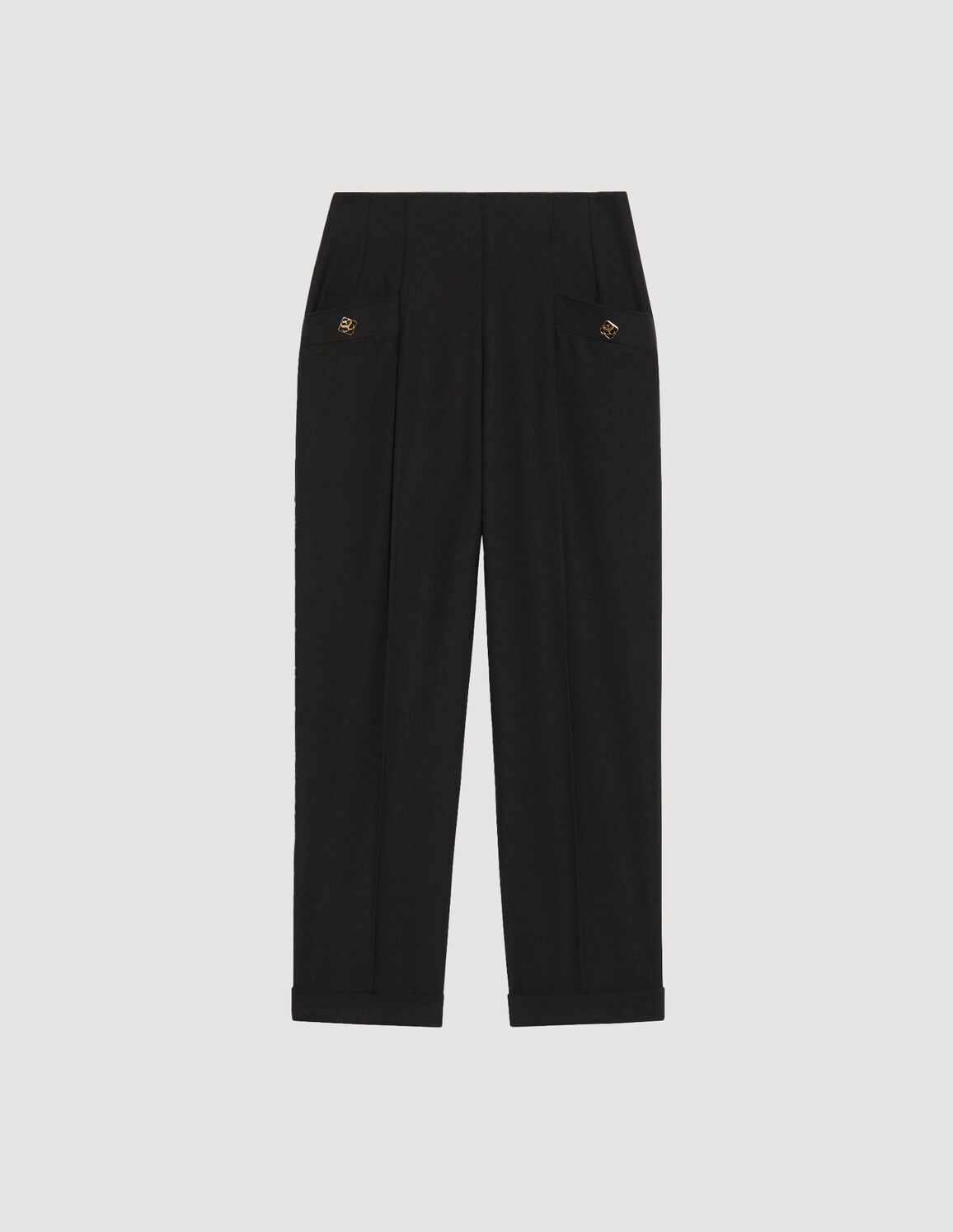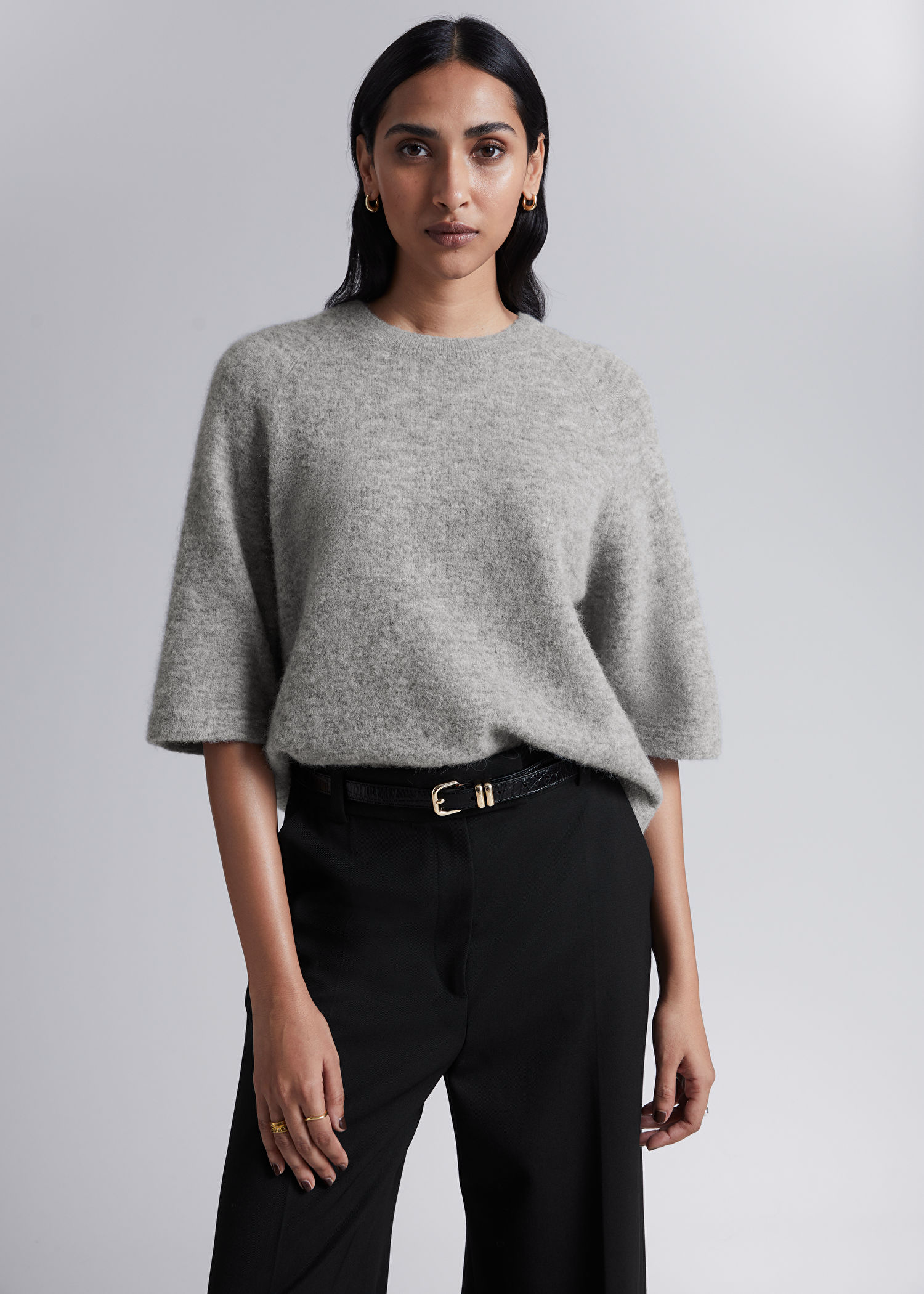What to wear on the hospital ward
Subtitle: All the answers for your first weeks on the wards.
By Olivia Geen, MD, MSc, FRCPC
I remember getting ready for my first clinical rotations. A mixture of excitement and apprehension. The questions running through my mind were endless.
What will it be like? How will I do? Where do I park? Where do I meet my team? How do I find my way around? What am I supposed to do?
These were all practical questions about functioning well in the role of medical student.
I also wondered - what do I wear??
This article will walk you through some basic options that might work for you. Style is always about choice and individuality, but there are some general guidelines that will help you make the best first impression in a bureaucratic and hierarchal world like medicine.
(If you want to change the nature of healthcare, head on over to Career to find out how).
Without further ado, here’s some basic style tips for working in a hospital.
Is it messy or is it lifestyle?
What kind of clothes to wear will largely depend on what service you’re working on.
Are you doing a rotation in general surgery? -> SCRUBS. Are you on allergy and immunology? -> semi-casual dress clothes will do.
That being said, after COVID-19 I’ve seen a lot more “lifestyle” specialities wearing scrubs in hospital. Something to do with a shift in culture towards leaving the germs at work (ick that we didn’t previously feel as strongly about this).
However, the basic decision tree is whether you think you’ll be doing surgery / procedures (getting blood or other substances on your clothes), or simply writing in charts and seeing patients. With the former I’d recommend scrubs, the latter semi-casual or personal scrubs.
If you’re not sure what to wear on your first day, I recommend showing up in semi-casual dress clothes with a set of scrubs in your bag. This way, if you get there and the residents and fellows are all in scrubs, you can say hello and ask where’s the closest change room to switch into the scrubs you already have with you.
You’ll make a good professional first impression AND be able to fit in for the rest of the day.
Wear what makes you comfortable
Ultimately, how people first see you is based on how you present yourself to them. They can’t mind read or have xray vision to see who you are on the inside.
Our cavemen brains evolved to make snap judgements on approaching strangers, largely related to whether we thought they were dangerous or not. Obviously this is outdated and problematic, but it doesn’t change the reality that first impressions are important.
Luckily, first impressions are in your control.
The key is it is not just about clothes. You could be wearing the most perfect outfit in the world, but if you’re feeling uncomfortable or embarrassed, how you feel about yourself will shine through.
Ultimately, perception = confidence + evidence.
Evidence comes from objective, visible things like how well you objectively perform on the job, your knowledge, and whether you “look the part” (sigh, I know, external stuff sucks).
Confidence, on the other hand, is all internal. It’s the subjective impression someone gets when meeting you, based on how you feel about yourself and thus the emotions you stir up in them. There’s a reason “fake it till you make it” has been a successful refrain for generations - our mirror neurons mimic what we see in the person in front of us (you).
This is why it’s less about wearing the “perfect outfit” and more about wearing “the perfect outfit for you”.
If you wear something that makes you feel uncomfortable, you’ll loose out on confidence.
If you wear something that feels comfortable, but isn’t work-appropriate for healthcare (e.g. lululemon leggings and a workout T-shirt), you’ll equally loose out.
Strike the right balance of professional and confident for you.
What scrubs to wear
There are two options here: the free scrubs that the hospital provides, or personal scrubs that you buy.
If you’re going to be doing surgery - i.e. in the OR - you don’t have a choice - it’s hospital scrubs. After you’re done with them, they go back in to the ScrubEx (scrub machine) and the hospital washes them for future use. Free laundry!
If you’re going to be doing procedures - probably up to you. If it’s really messy (i.e. doing debridements / incisions, etc), I’d recommend sticking with hospital scrubs because bringing that stuff home to your house is just not worth it.
In terms of personal scrubs, here are some brands I tend to see worn most often:
Figs
(Image source: wearfigs.com, accessed Jan 28 2024)
A cult favourite in healthcare at the moment, largely because they’re one of the first “fashion” brand of scrubs. Figs essentially allows you to look professional while being comfy. Literally the best.
They come in a variety of colours and styles so you can find what suits you best (and again what you feel most confident in).
In terms of colours, if you’re a physician, the trend seems to be muted or dark colours - black, brown, navy blue, dark green. If you’re a nurse, it can be anything, and I see a lot of nurses wearing bright colours which adds some much needed happiness to the wards.
I would say that colour overall is optional and so you can use this as one place to express who you are. Keep in mind that if you wear hot pink scrubs that will have effects on the objective evidence you present to people, including patients, meeting you for the first time.
Some days you might have the energy to fight against the patriarchy, and other days you might want to put your energy elsewhere. Up to you <3
Luuna
(Image source: luunascrubs.com, accessed on Jan 28 2024)
Several of my friends swear by these scrubs, particularly the men. They run about the same price as Figs, so it really depends on what cuts and colours you prefer.
Keep in mind as well, you really only need 3-4 pairs to last you an entire year in medicine, so while they might cost $$ up front, the cost-per-wear is pretty cheap.
What professional, semi-casual clothes to wear
It can be argued that there is a lot more room here to show your personal style than with scrubs.
That being said, there is a general “uniform” that works pretty well across contexts, so that’s what I’ll outline here. As above, wear what makes you confident, while realizing hospitals are a professional environment.
BOTTOMS
Black, brown, or grey slacks are a pretty safe bet.
My favourite are the conan pant from Aritzia. Aritzia in general is a good place for some staple items that will be appropriate in healthcare.
(Image source: aritzia.com, accessed on Jan 28 2024)
However, perhaps with pants more than anything else we wear, you really need to find the fit that works for you. The brand doesn’t matter so much as how it looks, which requires some time to figure out specifically for you (unfortunate, I know, medical school is very busy!).
Make a day of it and try on as many pants as you can in as many stores as you can - you’ll soon realize how different not only cuts, but also fabrics, pockets, etc will feel on you.
Another favourite pick - as an investment / low cost-per-wear piece, is this pair from Sandro. I’m 5’2”, so these work really well for me - and actually end up being ankle-length - no hemming needed!
(Image source: sandro-paris.com, accessed on Jan 28 2024)
TOPS
This is the most expressive place, in my opinion, when dressing for healthcare. The ultimate choice depends on the vibe, what looks best on you, and (as always), what you feel like the most comfortable and confident in.
This could include:
The Flowy Vibe
(Image source: everlane.com, accessed on Jan 28 2024)
Classic, professional, sophisticated. Realistically, few of us in medicine look as boss as the model in this photo, but we can with the right techniques!
First, notice how confident she is. Second, she’s using a classic colour blocking technique, which I’ll go into more in a later post, but is essentially where you wear only 2-3 colours, and make sure the bottom is balanced with the top.
I would not, however, recommend wearing white pants to the hospital… they will be highly prone to random stains.
The Sweater Vibe
(Image source: stories.com, accessed on Jan 28, 2024)
Perfect for winter of fall, a cozy knit sweater is totally appropriate for work. The key is to keep it simple, neckline crisp, and 3-quarter length sleeves are perfect so they aren’t dangling on patients and carrying germs from one room to the other (obviously you can also just roll up your sleeves if they’re full-length).
This particular item is from & Other Stories, which is not available in Canada but a go-to spot when I’m in the USA or Europe.
The Structured Vibe
(Image source: armourvert.com, accessed on Jan 28 2024)
You can never go wrong with a structured, collared shirt. This will definitely give you professional vibes, although for myself I don’t feel the most comfortable in this look.
Go for monochrome colours like black, brown, blue, dark green, and if you really want to impress, find ones with unique details like the cinched sleeves on this look (also great for keeping your sleeves out of patient contact).
What’s the cost?
As medical students, you are unpaid, and paying for medical school tuition, which is exceedingly expensive. We’re talking 75-100k just in tuition, let alone text books, stethoscopes, laptops, conferences, interview travel, exams, etc.
As a resident, you often make less than minimum wage for the hours worked.
As staff, you’re now starting to pay off that 100+K loan.
For this reason, at many stages of training and career, paying a lot of money for clothes is difficult. I’ve tried to show you just one or two pictures of what to aim for, but the particular brands don’t matter. No one knows where your clothes are from, and no one cares. Really.
You can look put-together following the simple rules outlined above, and find pieces that work for you from anywhere.
I’ll talk about cost-per-wear in another article, but the short version is you might want to invest in a few good quality, and more expensive basics that will last you for years. The trendy tops or things that you’ll want to change with the seasons can be found for less cost elsewhere.
Finally, I 100% realize the environmental impact that places like Zara and & Other Stories have on the world. This is a very real problem. Brands like Everlane and Amour Vert, included here, are known for being eco-friendly. Other than that, no comments here. This is not a political article, but a fun, style-guide to help nervous medical students know what to wear.
Good luck on your first rotation - and stride in with confidence!
xoxo
Olivia
Dr. Geen is an internist and geriatrician in Canada, working in a tertiary hospital serving over one million people. She also holds a masters in Translational Health Sciences from the University of Oxford, is widely published in over 10 academic journals, and advises digital healthcare startups on problem-solution fit and implementation. For more info, see About.







